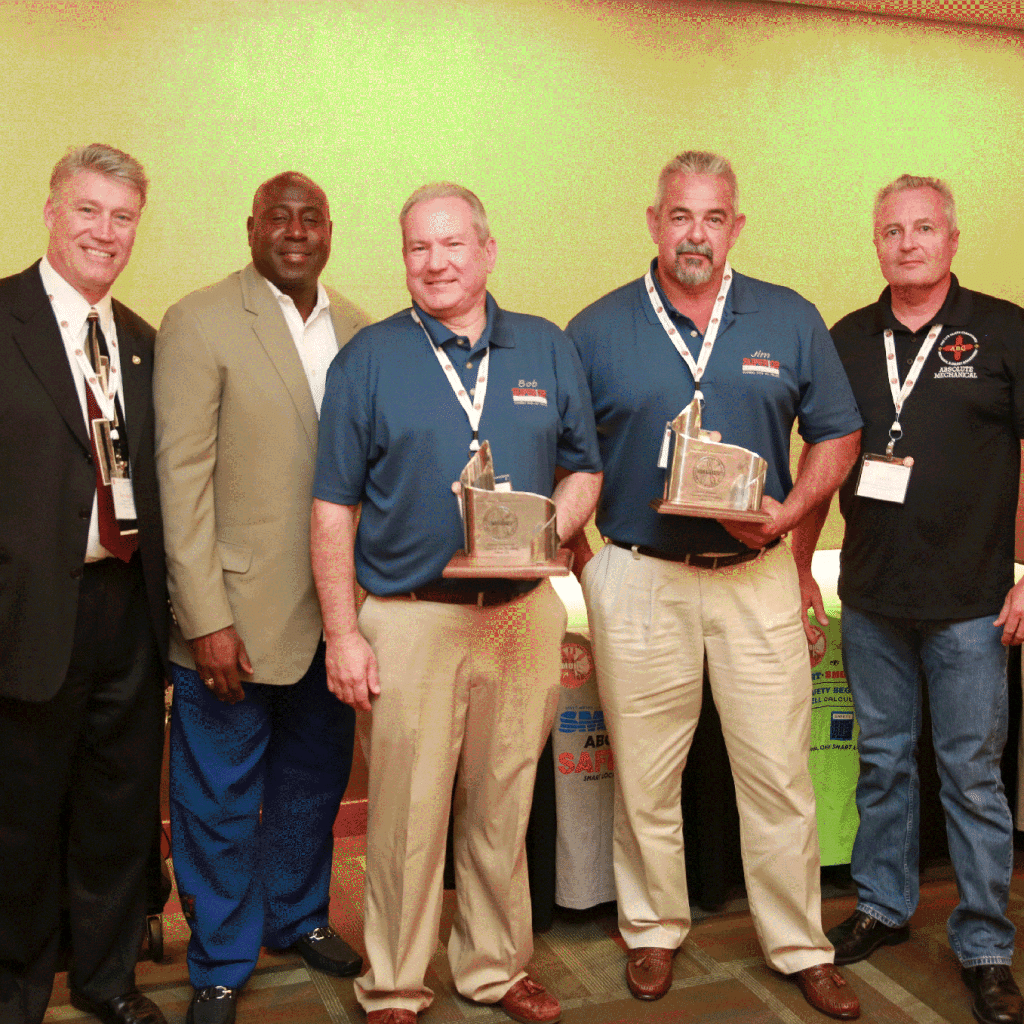
For the second year in a row, Superior Air Handling was one of several winners of the SMOHIT Safety Champion award for its record of safety at the Mixed Oxide Facility, known as The Mox Project, at the Savannah River Site.
The company reached a milestone of more than 1.75 million safety man hours, which amounts to seven years without a lost-time injury, to earn the award. Superior Air Handling expects to hit 2 million safety man hours by this spring.
James Walton and Robert Dickamore from Superior were on hand at SMOHIT’s second annual Safety Champions Conference in October 2016 to accept the award.
When accepting the award, Walton, a certified safety and health technician and safety manager for Superior said, “These awards are for the guys. Without them, I don’t have a job. They’re the reason I get up and go to work every day.”
The Mixed Oxide Fuel Fabrication Facility (MFFF) in Aiken, South Carolina will be a major component in the United States’ program to dispose of surplus weapons-grade plutonium.
The Mox project is one of Superior Air Handling’s largest ongoing projects. Superior is installing the HVAC and industrial ventilation systems for the facility, which is designed to take surplus weapons-grade plutonium, remove impurities and mix it with uranium oxide to form MOX fuel pellets for reactor fuel assemblies. These assemblies will be irradiated in commercial nuclear power reactors.
Superior Air Handling began work on the project site in 2009, and the company characterizes the project as one of the “most significant, complex, challenging and rewarding projects due to the unique design of the nuclear processing systems and the strict compliance to NQA-1 quality requirements.”
Superior’s team of more than 150 employees at Mox has installed much of the NQA-1 ductwork and equipment.
Superior Air Handling is one of the country’s leading HVAC sheet metal contractors with an extensive background in a variety of project venues, including laboratory and health care facilities, high rise commercial buildings, and nuclear plants.
Related News
- Fourth of July 2025: General President Coleman’s message to members
- Senate Strikes Down Spending Bill’s Harmful AI Provision
- Razor blade found on brake wheel
- Coming Soon: SMART-TD Voluntary Income & Life Protection (VILP) Program
- NIH funding cuts contribute to lost work hours for San Diego sheet metal workers
- Senate Passes Tax Bill Without Including Railroaders
- Canada Day 2025: General President Coleman’s message to members
- SMART-TD Honors the Retirement of Brother Greg Hynes: A Visionary, a Fighter, and a Legend
- SMART-TD Calls on U.S. Senate to Support the Cantwell Amendment and Protect Rail Workers
- Yardmaster Protection Act Introduced